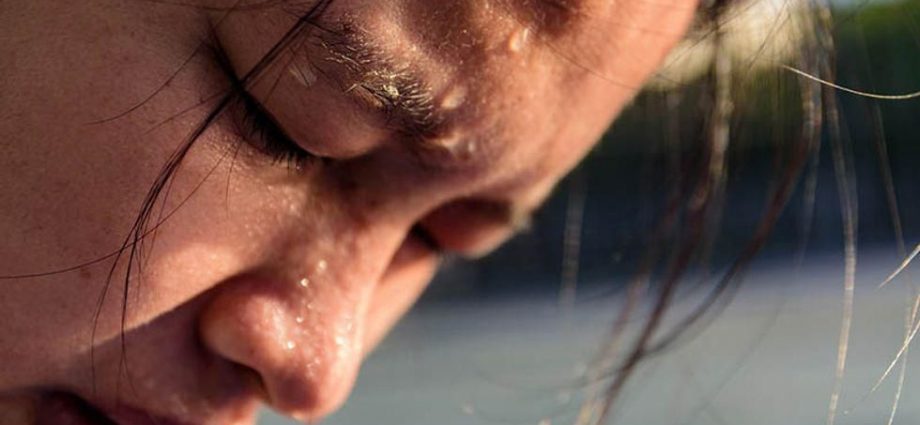WEDNESDAY, Oct. 13, 2021 (HealthDay News) — Urban dwellers around the globe are sweating through three times as many “extreme heat” days as their counterparts did in the 1980s, a new study suggests.
The study is the latest to chart humans’ growing exposure to dangerously high temperatures. Experts said it looked at what’s happening in finer detail than previous research has — and it suggests that exposure to extreme heat is more widespread than thought.
By the researchers’ estimates, 1.7 billion urban dwellers — or almost one-fifth of the planet — were exposed to a rising number of extreme heat days between 1983 and 2016.
Those are the kinds of temperatures that raise the risk of heat illness even for healthy people if they are working or exercising outdoors.
To the people living in hot cities, “it’s not news that it’s heating up,” said study leader Cascade Tuholske, a research scientist at Columbia University’s Earth Institute in New York City.
It’s not that urban areas are the only places feeling heat, said Tuholske, who was a graduate student at the University of California, Santa Barbara, at the time of the study.
But cities sizzle because of a combination of two factors: climate change and what’s called the urban heat island effect. That’s where a lack of grass and trees and an abundance of concrete and asphalt conspire to trap heat.
Plus, more of the world’s population has been moving to urban centers — which, Tuholske’s team found, was an additional reason for the growing exposure to extreme urban heat.
The findings, published recently in the Proceedings of the National Academy of Sciences, are based on data from more than 13,000 cities around the world. Researchers estimated population exposure to extreme heat days — which was defined as a “wet bulb globe” temperature of 30 degrees Celsius (86 degrees Fahrenheit) or higher.
That’s a measure that accounts not only for temperature, but also humidity, wind speed and cloud cover. It gives an idea of the “feels like” temperature for people who are out in the sun.
When the wet bulb globe temperature reaches the 30 C threshold, a healthy person would start to feel heat stress after 30 minutes of working or exercising outdoors, according to the U.S. National Weather Service.
“It’s not only older people who are affected,” Tuholske noted.
His team estimates that during the study period, people in those urban areas saw a 200% increase in exposure to extreme-heat days. But the impact was not uniform: Twenty-five urban areas accounted for one-quarter of the increase in exposure to extreme heat.
The top four were: Dhaka, Bangladesh; Delhi, India; Kolkata, India; and Bangkok, Thailand.
Still, the problem was widespread, with nearly half of urban areas showing an increase in residents’ exposure to extreme heat.
The findings underscore the importance of gathering finer details on what city residents are actually experiencing, according to Dr. Mona Sarfaty, head of the Program on Climate and Health at George Mason University in Fairfax, Va.
Some innovative projects are aimed at that, she said. In Miami, for example, researchers have armed “citizen scientists” with heat sensors to track the temperatures they face in daily life. At one bus stop, Sarfaty noted, the average temperature topped 100 degrees Fahrenheit.
While global warming needs to be addressed with broad changes — including less reliance on fossil fuels like oil and coal — local measures also matter, both Sarfaty and Tuholske said.
Cities can create more “green spaces,” Sarfaty said, not only to provide shade but also to help cool the air. Some cities, such as Phoenix, are applying special coatings over asphalt to dial down the temperature of paved areas.
Local health departments and employers can also do more to spread awareness, Sarfaty said. She pointed to a recent study in Texas, where a “heat stress awareness program” was found to reduce heat-related illness among city employees who worked outdoors.
“People aren’t necessary aware of how quickly they can succumb to heat,” Sarfaty explained.
As with so many health conditions, Tuholske said low-income and marginalized people are among the most vulnerable, as they often work outdoors and lack air conditioning and other options to mitigate their exposure to dangerous heat.
There’s a particular concern, he noted, for people living in cities throughout the world that simply were not designed to sustain the large populations they now have.
More information
The World Health Organization has more on climate change and health.
SOURCES: Cascade Tuholske, PhD, postdoctoral research scientist, Earth Institute, Columbia University, New York City; Mona Sarfaty, MD, MPH, director, Program on Climate and Health, George Mason University, Fairfax, Va.; Proceedings of the National Academy of Sciences, online, Oct. 4, 2021
Copyright © 2026 HealthDay. All rights reserved.

